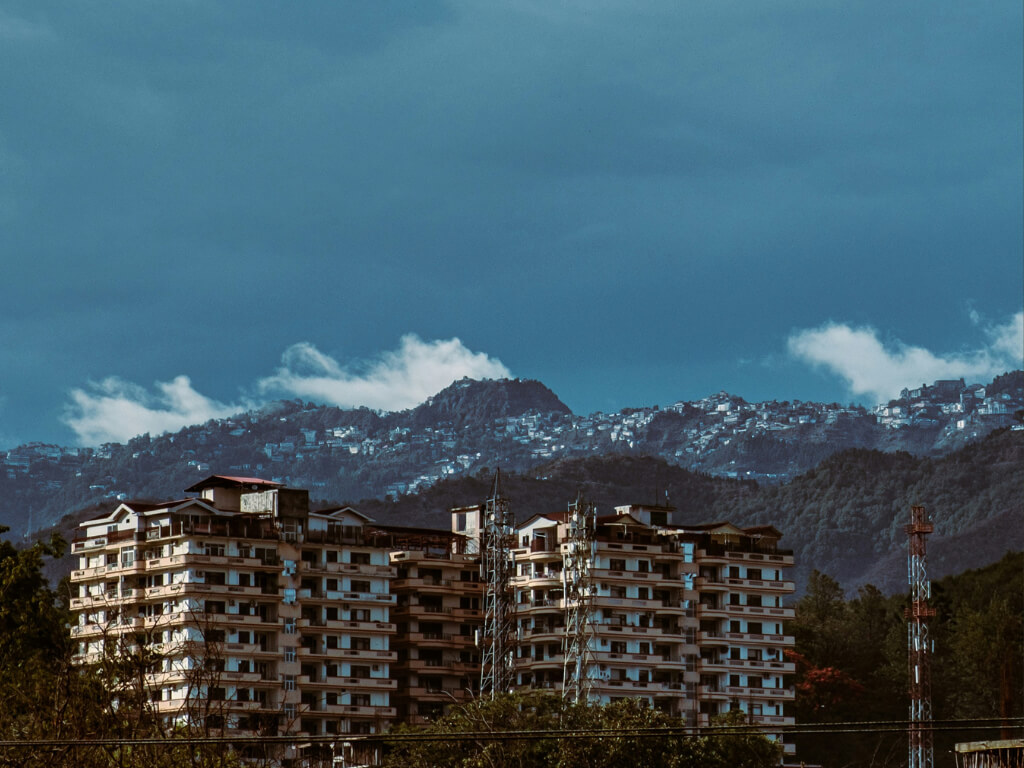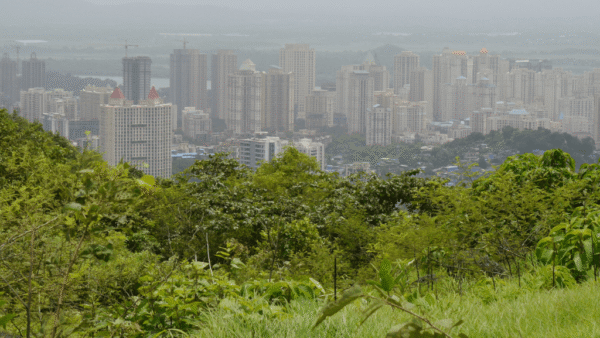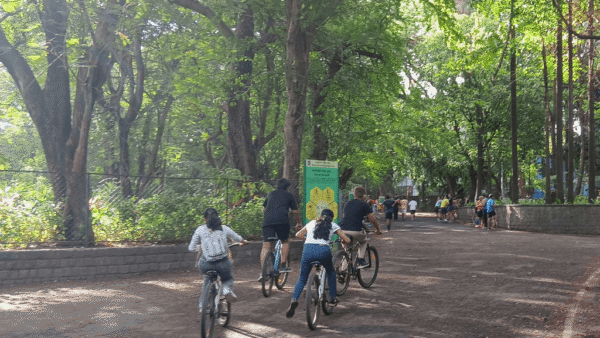On the night of September 15, Dehradun and its surrounding areas saw over 67 millimetres of rain per hour. This led to a deluge at several locations along the foothills of Mussoorie. Cloudbursts were suspected in some higher elevations although the India Meteorological Department denied this. The capital of Uttarakhand and its environs suffered extensive damage to human life and infrastructure – people were washed away as seasonal streams turned into raging rivers, bridges and roads collapsed, and landslides destroyed the road to Mussoorie. This was after only one night of rain.[1]
Call it nature’s fury or human stupidity – or both – but the time of reckoning has come especially for the government of Uttarakhand. This is because the intense rain and devastation came at a time when Dehradun’s citizens have been involved in a tussle with the authorities[2] over massive multi-crore infrastructure development projects. Most of these appear to ease the way for tourists to reach the hill station of Mussoorie, not make life easier for the residents of Dehradun.
Much has been written about the “all-weather” highway[3] for the Char Dham Yatra, a pilgrimage of import for devout Hindus. The marque highway project to ease the pilgrims’ journey has, however, caused extensive damage to the mountains and the ecosystem already. Roads have collapsed even as they are being built; the cost is already close to Rs 15,000 crore and does not include the money needed for repairs caused by nature’s fury.
Not just this but other projects too will affect Dehradun, once a salubrious town for boarding schools, retirees, and government institutions including the Survey of India, Forest Research Institute, Indian Military Academy, and ONGC, and the gateway to the Garhwal Himalayas. Since it became the state capital and a city, Dehradun has expanded in all directions with basmati fields and litchi orchards, once its pride, making way for the construction of offices, houses and shops. Some of this is progress, a large part of it greed and lack of foresight.
Land use changed, so did the environment. The problem is twofold. On the one hand, there is rampant unplanned and unchecked construction and, on the other, the infrastructure projects do not factor in either the topology, geology, climate and environment or the needs of the locals.
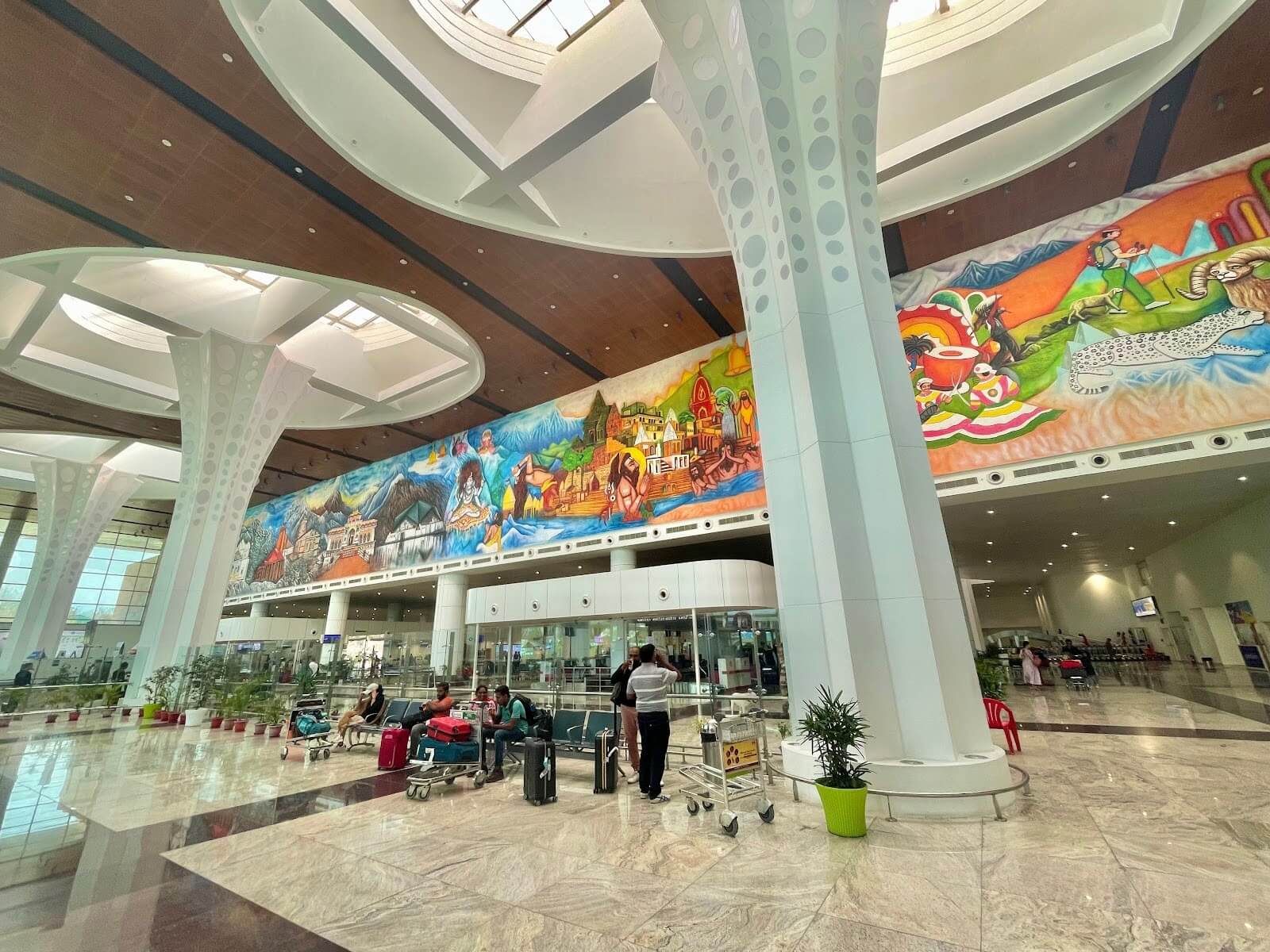
Photo: Wikimedia Commons
Forest sacrificed for airport expansion
In 2024, the Chief Minister of Uttarakhand, Pushkar Singh Dhami, inaugurated the city’s swank new airport terminus. The airport, about 20 kilometres from the city centre,[4] services Rishikesh and Haridwar besides Dehradun. However, to cater to the increasing tourism, an additional Rs 300 crore has been earmarked for a further expansion of a recently expanded and refurbished airport. This includes the acquisition of 87 hectares of land but information about the land acquisition is hard to come by.
In May 2025, local papers reported[5] that most of this was agricultural land and compensation details were being worked out, but importantly, what was not mentioned was the acquisition of forest land which adjoins the airport. About half of the 87 hectares includes seasonal streams and water sources, an elephant corridor, and 6,000 trees within the Shivalik[6] Elephant Reserve earmarked to be axed. The area also has leopards, antelopes, birds and other wildlife – an entire ecosystem that will be decimated.
Environmentalists and concerned citizens raised objections but to no avail. An activist who monitors environmental impacts rued that the forest department should have objected but is unlikely to do so. A media report this June stated that the chief minister had declared that no trees would be cut for the airport expansion.
Does Dehradun airport need one more expansion? Possibly, someday in the future. Even so, why does it have to be at the cost of forest land is a question that begs answers. What is evident is that the government is adamant and, if this land is not forthcoming, another airport will be built in Hardwar, according to sources and reports. Hardwar is a mere 40 minutes, or 38 kilometres away, from Dehradun’s Jolly Grant airport. This makes the airport expansion idea even more questionable, especially when it costs a forest.
Purkul ropeway will gobble up village land
About a year from now, the Purkul Ropeway project is set to be completed. At a budget of Rs 400 crore, it will carry tourists from Dehradun to Mussoorie in cable cars and reduce road congestion. Purkul lies outside the municipal jurisdiction of Dehradun and ropeway users will have to negotiate narrow country roads to reach the village. As ever, the plan states that the ropeway will help the people of Dehradun when, in fact, it aids tourists to reach Mussoorie. The burden, however, will fall on Purkul hamlet.
Locals will lose land for the proposed road expansion and ropeway infrastructure. This is a hilly area filled with seasonal streams which feed into tributaries of the Ganga and Yamuna. The carrying capacity of Mussoorie is already stretched. The Uttarakhand government has initiated plans to only allow registered tourists into the hill station to restrict access. It, therefore, boggles the mind as to why more ways and means to reach Mussoorie are needed. Of course, there’s no clarity on how the ropeway will help locals.
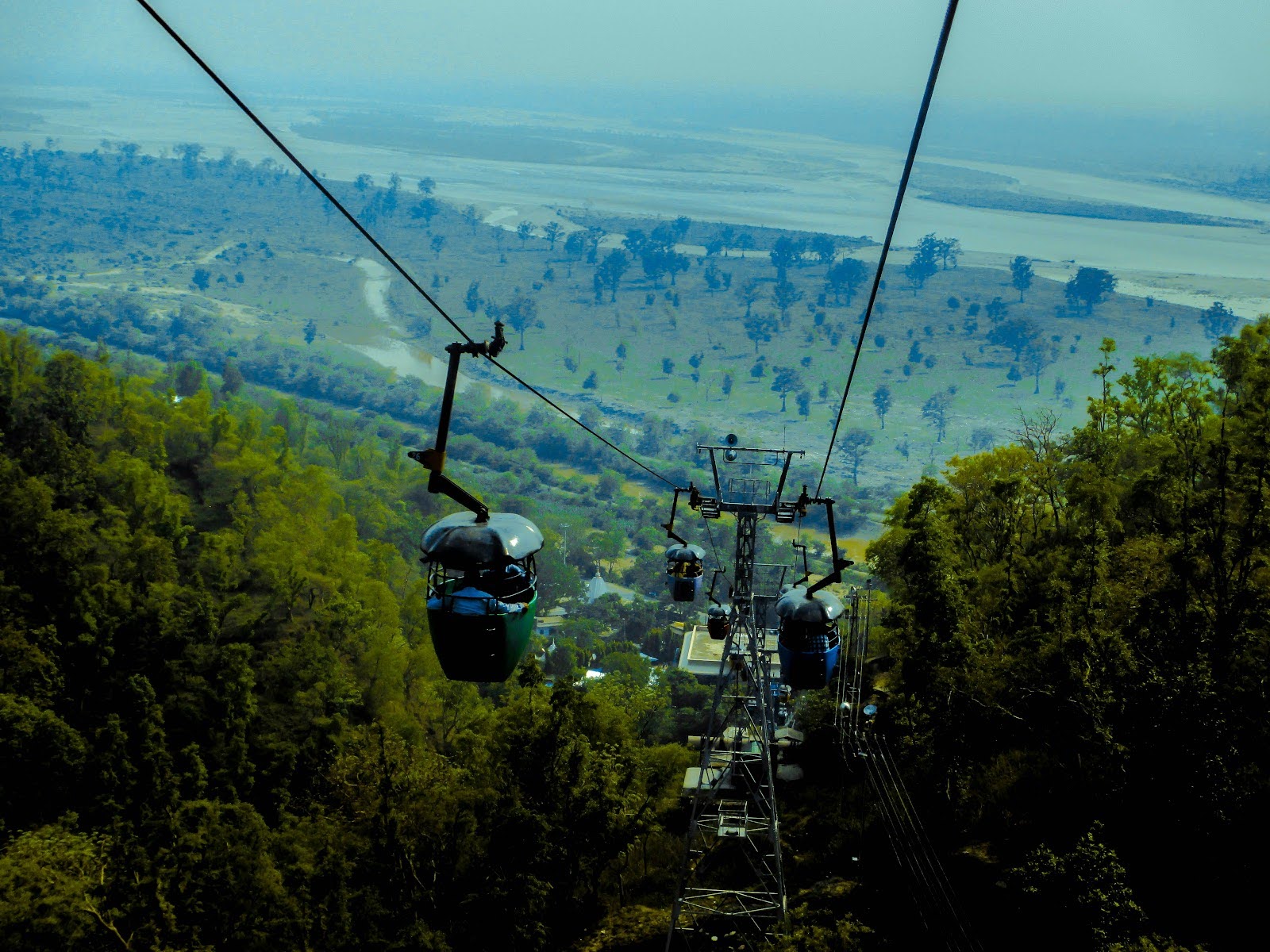
Photo: Unsplash
Nature has begun the pushback already. During the heavy rains in August, the site earmarked for the ropeway’s landing station in Mussoorie collapsed. In fact, the Himalayas have been relentless in communicating the do-not-mess-with-us message through the monsoon this year – in Jammu and Kashmir, Ladakh, Himachal Pradesh or Uttarakhand – but governments are too invested to care. The ropeway is part of the new Master plan for Dehradun 2041[7] which is still under consideration but the project has been initiated. So, its total impact has not even been budgeted into the city’s expansion.
Elevated corridor. To where?
On the cards is also the elevated corridor project along two rivers that run through Dehradun, the Bindal and the Rispana. These elevated roads will follow the course of the two rivers with their pillars embedded into the riverbeds.[8] The current projected cost has risen to about three times the cost when the corridor was initiated without a single brick being laid. Although some official figures remain at just over Rs 6,200 crore, in a recent meeting, officials and activists said the project cost has crossed Rs 9,000 crore.[9]
Ramana Kumar, a concerned citizen of Dehradun, has closely followed this project. Due process was not followed by officials who tried to bypass the mandated citizens’ opinions, he says. It took a PIL and a court ruling to force the state government to hold public meetings. Says Kumar, who attended all the meetings: “The manner in which they were conducted was quite unprofessional, the officials did not even bother to identify themselves by name, designation or agency, there was no microphone to make themselves heard clearly by the audience and vice-versa. After I pointed out the lack of mics in the first round, they started using them.”
While 12 hearings have been held so far, the Minutes have not been made public which raises suspicions. “With no publicly released Minutes, what guarantee do people who expressed their opinions have that their views have been recorded and conveyed correctly to the higher authorities,” asks Kumar. More importantly, he, like others, questions the need for this project: “There is an appalling lack of transparency to publicly share the studies which ‘justify’ this mammoth project in a small city with an estimated population of barely 8.3 lakhs.”
Worse, those who questioned the project were physically threatened in meetings despite the presence of politicians. I was personally at a public meeting where officials were unable or unwilling to share the hydrology report that they claimed was done by IIT-Roorkee which stated that it was safe to build on riverbeds. The Environment Impact Assessment report is also unavailable. In all, there appears to be a deliberate attempt to keep people in the dark about how this project will impact them – in their own land. The impact on the environment is even less known.
The slums and settlements along the riverbeds will need to be rehabilitated too but the residents here have no details yet. Many of them pointed out that they had bought the land, often with assistance from local politicians, and had official water and electricity connections. But as the project looms large over their lives, those “leaders” are nowhere to be found. The humanitarian and livelihood cost of this unnecessary project has not even been factored in.
So, the question in people’s minds here: Who is the elevated corridor being built for with a public cost of Rs 9,200 crore? Officials weakly claim that it is to alleviate traffic problems for the people of Dehradun but this is easily disproved. The two elevated roads combined span 26 kilometres and both will have cars converging on the two existing roads, namely Mussoorie Diversion Road and Rajpur Road, which are already straining to hold existing traffic.
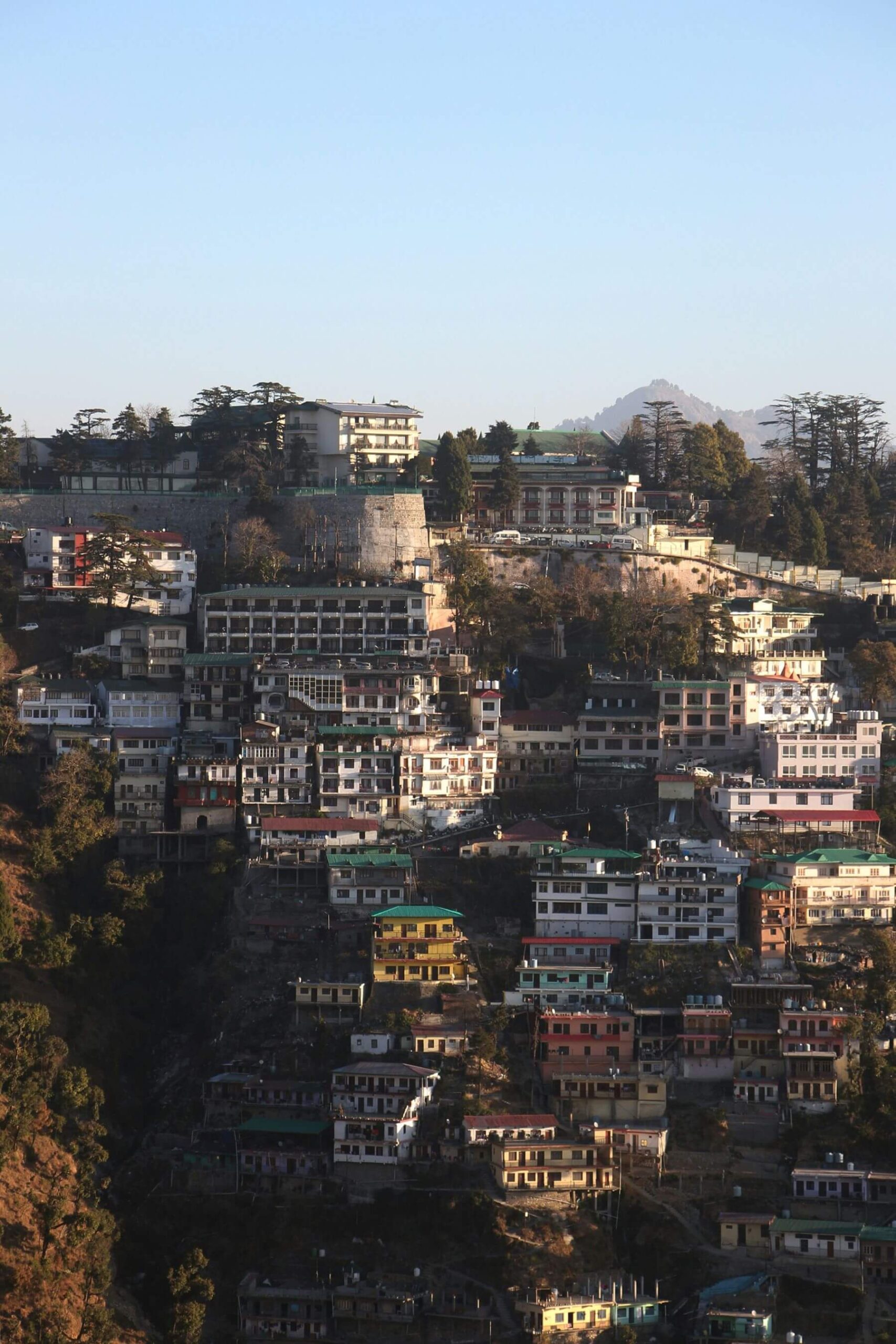
Photo: Milin John/ Unsplash
Besides, Rs 9,200 crore for 26 kilometres seems an inordinately high amount per kilometre. But, even if we ignore this, it is an amount which could address other problems in Dehradun – the lack of organised public transport, the lack of proper sewage, the growing shortage of both middle- and lower-income housing, badly maintained roads, garbage collection, and waste management. In other words, basic urban services.
These are, not surprisingly, tied closely with the environment of Dehradun. Already, portions of the city have become heat islands[10] and there has been rampant destruction of forest land – the two are not even correlated by authorities. The loss of green cover over the past 20 years is close to 80 percent. If more green is decimated for more roads, it will spell disaster for the city.
Why the Himalayas must be spared
A committee appointed by the National Green Tribunal[11] recommended that no projects should come up in the Himalayan region without comprehensive geological studies. The ground situation from landslides to tunnel collapses illustrate why. Dehradun-based geologist Dr Swapnamita Vaideswaran, who has travelled extensively in the Himalayas, wrote, in Down to Earth, how extreme events have been rising in the last decade and wondered if extremes will become normal. A paper by[12] Katzenberger and others in Geophysical Research Letters in 2022 pointed out that the mean seasonal Indian summer monsoon rainfall, as distinct from winter rains, is towards wetter years historically from 1965 to 2015, and modelled a rising future (2050–2100) with unabated climate change.
Elevated roads on river beds can only be environmentally catastrophic; the pillars could change the natural flow paths, lead to channel-shifting, which could cause localised turbulence and scouring, according to geologists. Add to this the construction debris which will constrict the river further. The effects could be, ironically, both deluges downstream and floods upstream due to a change in hydraulic gradient.
The Supreme Court flagged off the situation from unregulated tree-felling in[13] Himachal Pradesh but this applies to all states in the Himalayan region. Besides, Mussoorie and Dehradun fall in Seismic Zone 4 and two thrust lines run through them. It is fundamental common sense that these aspects should be factored into all infrastructure plans and decisions, but the authorities do not. Human decisions and activities are responsible for the disasters that might happen, not merely the weather vagaries. And if it is the Himalayas today, it will be the coasts tomorrow.
In the mountains, there’s a common folk story about being followed by an unknowable, unseeable entity when people are in the wilderness. Is it a ghost or some presence? The tale lingers. If the Uttarakhand government does not pause and revise its plans to align with the environment now, the next generations may be mercilessly haunted by the spectre of damage that was created by sheer greed and lack of foresight.
Ranjona Banerji is an independent journalist who writes on the media, politics, gender issues and social trends. She has worked with a number of Indian journals since the mid-1980s, including Bombay Magazine, Mid-Day and DNA in Mumbai. She also worked with the Times of India in Gujarat in the early 2000s. About 10 years ago, she moved to the Himalayan town of Dehradun where she now watches mountains, birds and the hustle of Indian politics and media shenanigans.
Cover photo: Soheb Zaidi/ Unsplash

